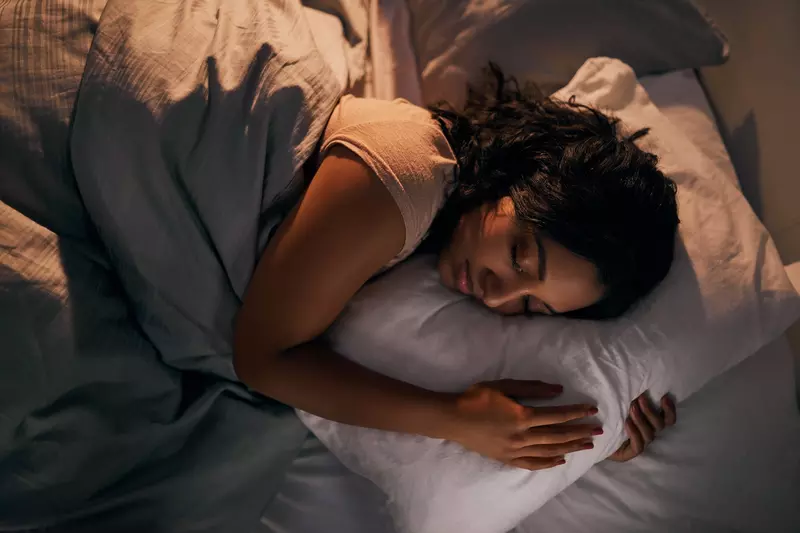- AdventHealth

Choose the health content that’s right for you, and get it delivered right in your inbox.
Quality sleep greatly improves overall health, including boosting your immune system, clearing your mind and reducing stress. So, when you struggle to get to or stay asleep, it can be hard to live your best life. There’s been a lot of talk about sleep routines and turning off screens before bedtime, but only recently have people begun to dig in regarding the effects of noise colors on sleep. Discover more about noise colors and how to decide which ones may be right for your sleep routine.
How Noise Affects Sleep
Noise affects sleep by breaking up the natural rhythm of your sleep. During normal, healthy sleep, your body rotates between rapid eye movement (REM) and non-REM sleep. Noise makes your body more prone to staying in lighter, non-REM sleep. This shallower sleep is less restful and easier to wake up from. Environmental noise, for example, can cause sleep disturbances, which can lead to trouble concentrating, depression and anxiety. And loud, sudden noises that wake you at night can trigger stressful fight-or-flight responses.
Different Types of Sleep Noise
Playing specific types or colors of noise can balance out environmental noise that might affect your sleep at night. Some of the most popular noise colors for sleep include:
White Noise
The most well-known noise color, white noise, also called broadband noise, contains all frequencies in the sound spectrum in equal parts. White noise often sounds like static.
Pink Noise
Also called ambient or fractional noise, pink noise is steady background noise that uses a mix of high and low frequencies. The sounds are often deeper, simulating things like a waterfall, steady rain or rustling leaves.
Brown Noise
Brown (or red) noise uses bass notes and lower frequencies than pink noise and has a deeper sound. Brown noise may sound like rumbling thunder, heavy rainfall, or rushing rivers.
What Color is Best for Sleep?
Finding the noise color that’s best for you depends on several factors, including your environment and specific problems with sleep. Tracking your sleep cycle is one way to understand your unique sleep challenges better. Many smartwatches and other devices can give you a better picture of your nightly sleep. And if needed, you can also see a sleep specialist who can do a sleep study.
While there aren’t many studies on sleep and noise colors yet, some early evidence suggests that different noise colors have different benefits for sleep:
- Brown noise to balance environmental noise
- Pink noise to support light sleepers
- White noise to help those with insomnia
Fortunately, there are many options for bringing noise colors to your bedroom. Consider a sound machine or noise generator that can sit next to your bed, download a noise color track on an app like Spotify or subscribe to a sleep app, like Sleep Sounds, White Noise Lite or Calm, on your smartphone or tablet.
How to Improve Sleep
Of course, controlling noise is just one part of getting a good night’s sleep. You can practice good sleep hygiene by:
- Avoiding blue light, including TVs, computers and smartphones, before bed
- Being active and exercising during the day
- Going to bed and waking up at the same time every day
- Keeping your bedroom dark
- Steering clear of caffeine before bed
Sleep Better with AdventHealth
A good night’s sleep is a great first step for a happy, healthy day — and for maintaining your overall health. If you’re having trouble sleeping, our sleep navigators and expert care providers can help you understand your sleep cycle so you get the “Zzzs” you need.


